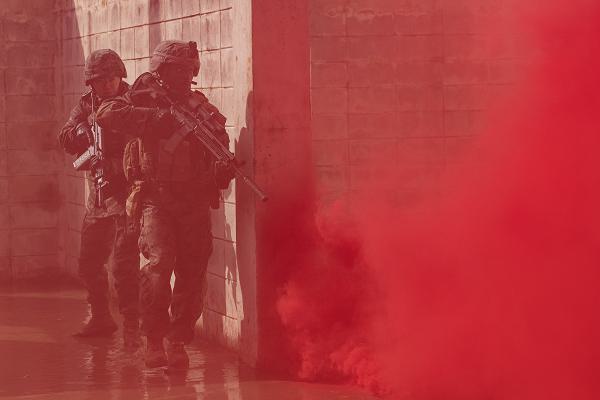
Camp Mujuk, Republic of Korea. (March 14, 2024): There is one environment where America’s mighty warplanes, powerful tanks, and high-tech weapons are virtually useless. In this photo by Lance Corporal Evelyn Doherty, Marine Corps Lance Corporal Ahmier Fillmore and a fellow Republic of Korea Marine navigate in close quarters combat during urban warfare training. It is combat in the cities that negates many of the advantages of modern militaries while offering significant advantages to the defenders.
Considered to be the most difficult form of warfare, fighting in urban areas is complicated by the presence of civilians, unfamiliar terrain, and the three-dimensional nature of the battlefield. Fighting in urban areas also negates the advantages that one side may have in armor, heavy artillery, or air support.
The U.S. Military is bound by the Geneva Conventions, the laws of war governing the amount of force which can be used in an area where there are known to be civilians. This necessitates severely limiting artillery and air support to limit civilian casualties. Worse for the attacking force, it is often difficult to distinguish civilians from other armed combatants such as militia groups and gangs. In fact, many times an enemy will deliberately blend with civilians to create a human shield for their forces.
Urban combat is made even more challenging by the characteristics of an average city including tall buildings, narrow alleys, underground tunnels, and even subway systems. Defenders enjoy detailed local knowledge of streets and back alleys not shown on maps that allow them to move undetected across the city. From these protected locations, small armed groups spring ambushes using handheld anti-tank weapons and then vanish into the landscape. This three-dimensional environment means attackers have limited fields of vision due to buildings and mountains of rubble which offer excellent places for defenders to deploy snipers or conceal booby-traps. Finally, attacking forces must constantly expose themselves in the streets while doing house to house searches.
The American Marines have extensive experience in urban combat from service in Iraq and Afghanistan and welcome sharing this hard-earned knowledge with their Korean comrades.


